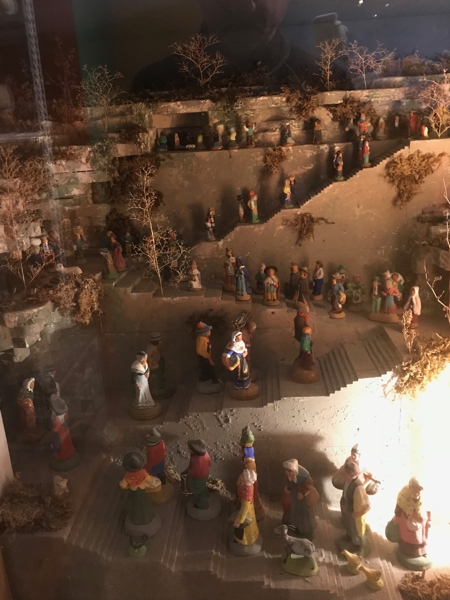You thought there were a lot of photos yesterday? Today we went to the Museum of International Folk Art.
We’ve been there before, on our Cross Country Caper back in 2013, and I’ll be repeating some of my observations from then. That first time, I was unaware that they encourage you to take photographs until we were leaving, so there were only a few in that post. This time, it’s serious.
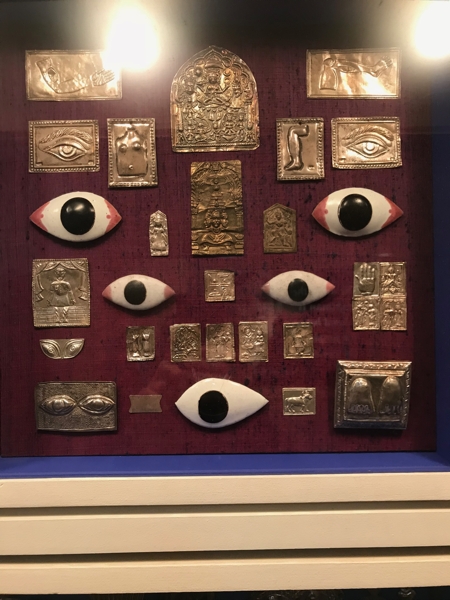
And we’re off. The bulk of the museum is the Girard Wing, the collection donated by Alexander and Susan Girard. As you enter that wing, there’s a wall of amulets.
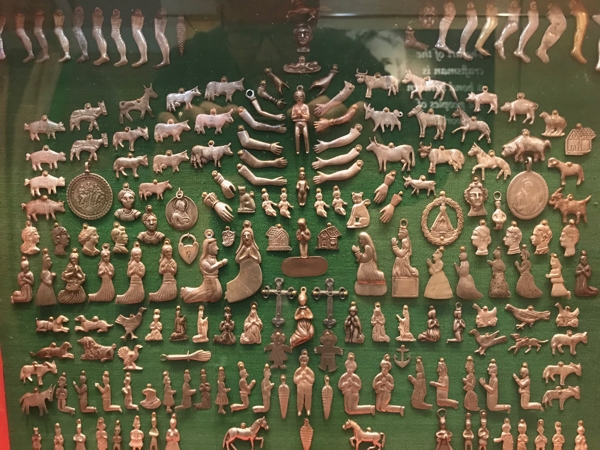
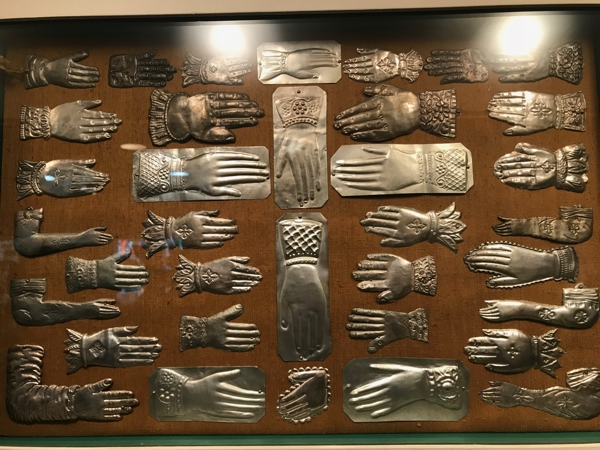
I mean, a wall of amulets:
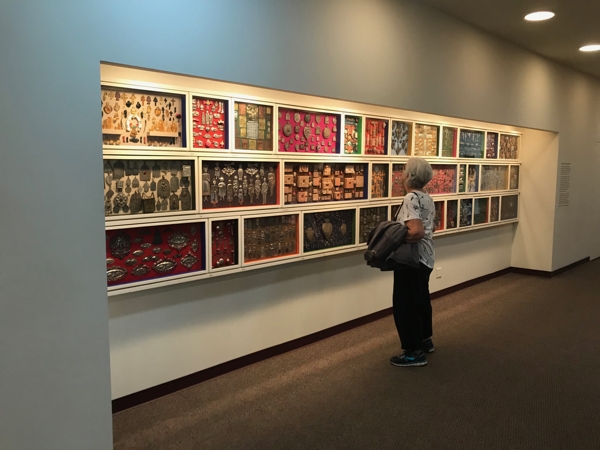
And then there are toy theatres:
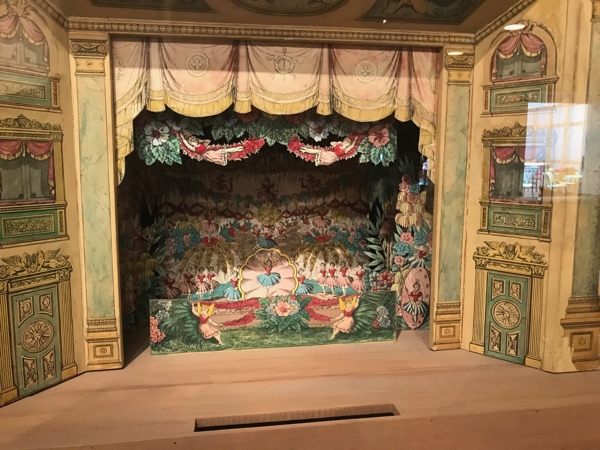
A wall of toy theatres:

There are a couple of pieces, kind of lagniappes before you enter the exhibit itself…
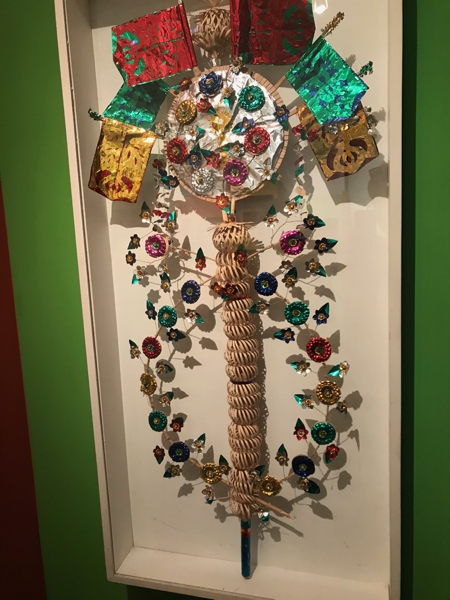
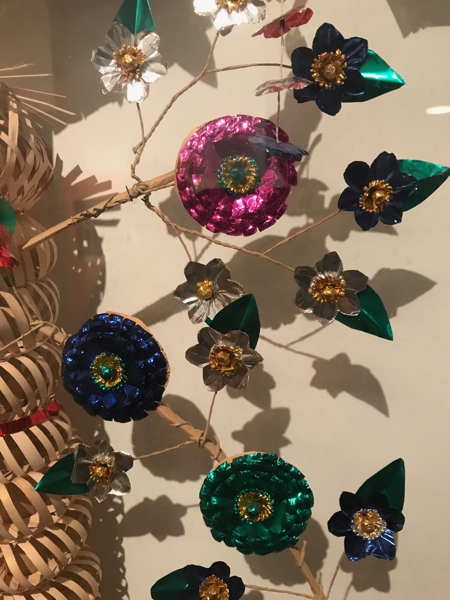
Remember, all of this stuff is hand-made by hand.
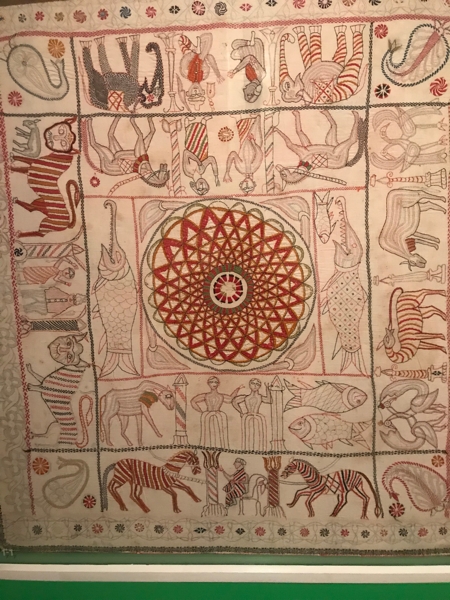

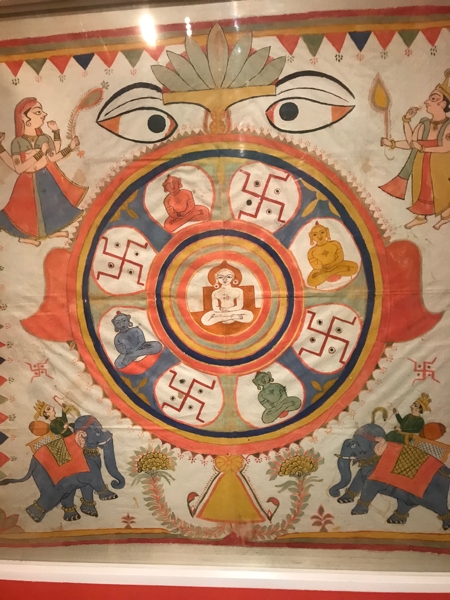
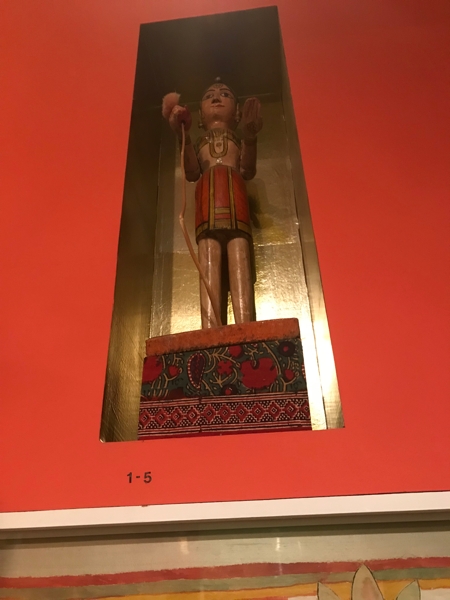
These stray pieces are protective, guardians of the entrance.
And then you enter the exhibit:

Have a bigger look:
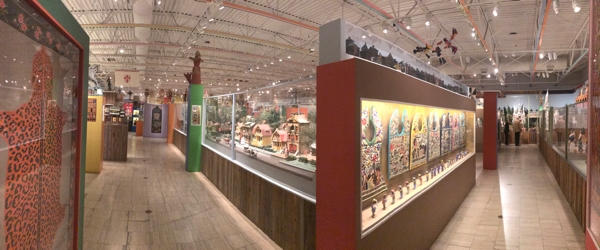
It’s the size of a Wal-Mart. And this, my friends, is one-tenth of the actual Girard collection.
So let’s start. I thought about doing the slide show thing, but I have literally over 100 photos and I don’t want you to miss anything, so start scrolling.

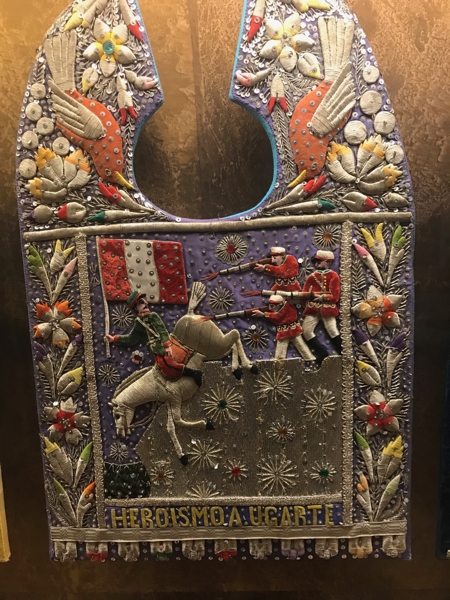
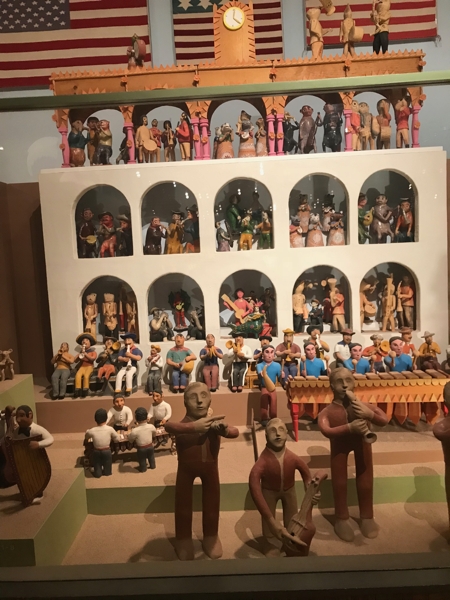
Hundreds, thousands of figurines in this room, all hand crafted.
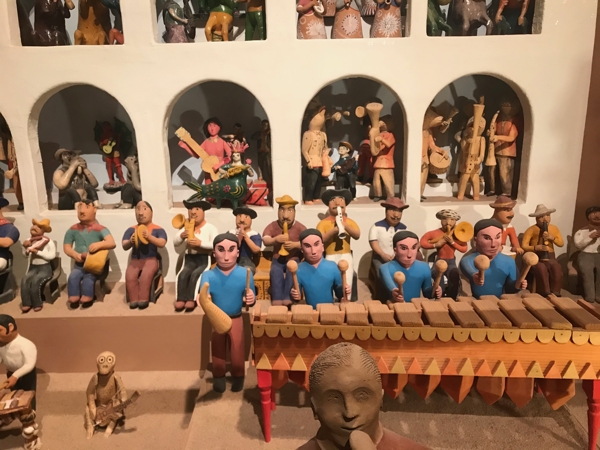
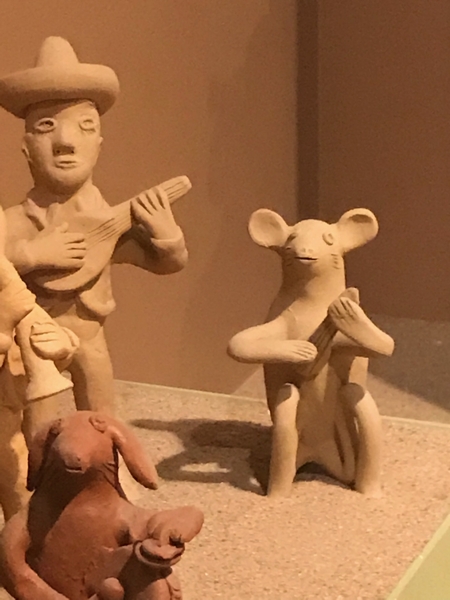
In making notes for my book — yes, there’s going to be a book — I draw your attention to the lack of “perfection,” i.e., academic notions of idealized form. None of these figures have any kind of verisimilitude; that’s not what a guitar player looks like in real life, and that’s certainly not what a guitar-playing rat looks like.

You know, just your average foil-covered nativity scene.
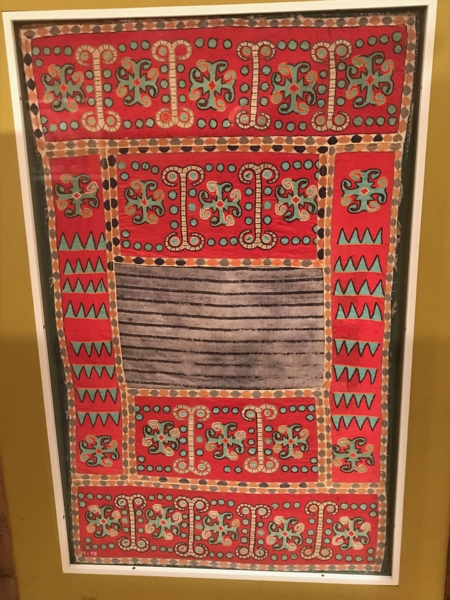

NOTE #2: Do you have notions of symmetry? Or do you, when you run out of one color of thread, just switch to another color and keep going?

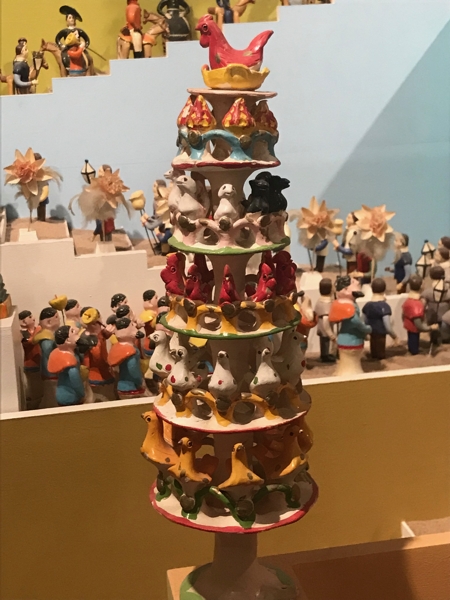

I wish I knew more about this figure, but isn’t he great? Multiple heads and hands, and the hands are all holding… spoons. That other hand is either a hoof or wearing an oven mitt.
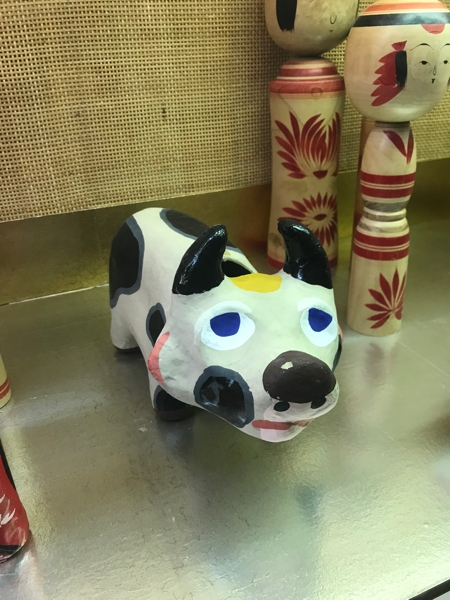

Almost all of the scenes in the exhibit are assembled from disparate sources. There’s only one of these detail-crammed pieces that’s done by a single artist:
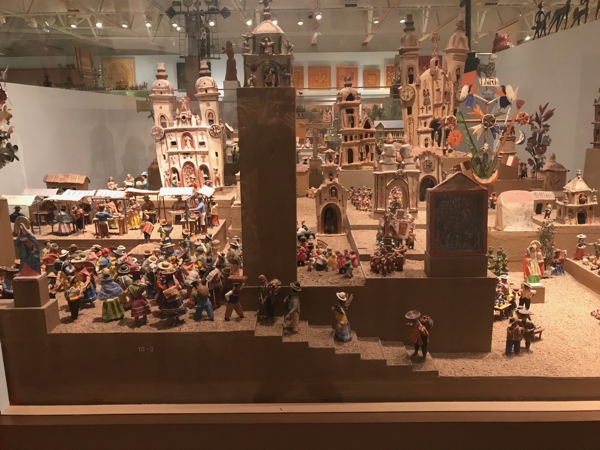

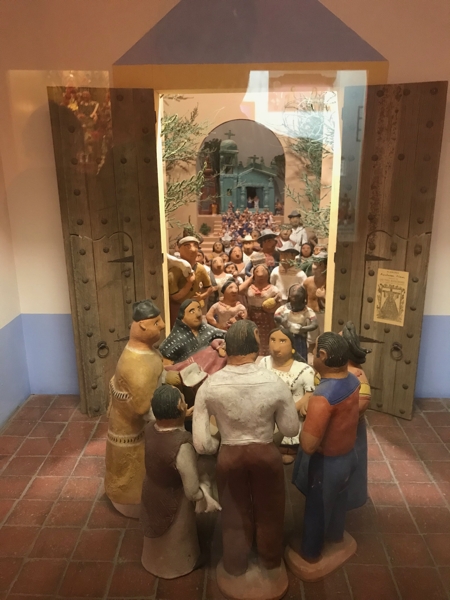
Look at this one closely. What the curators have done is assemble three groups of figurines and grouped them in a forced perspective setting. The foreground is a baptism, and the joyful crowds outside stretch all the way across the plaza to the other church.



Yep, those are beads. Tiny, tiny, little beads.
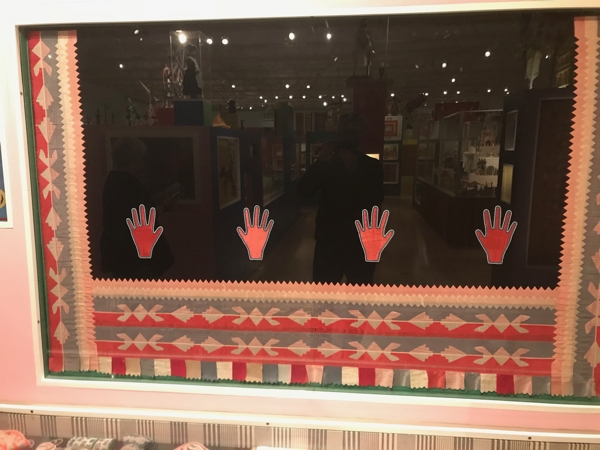
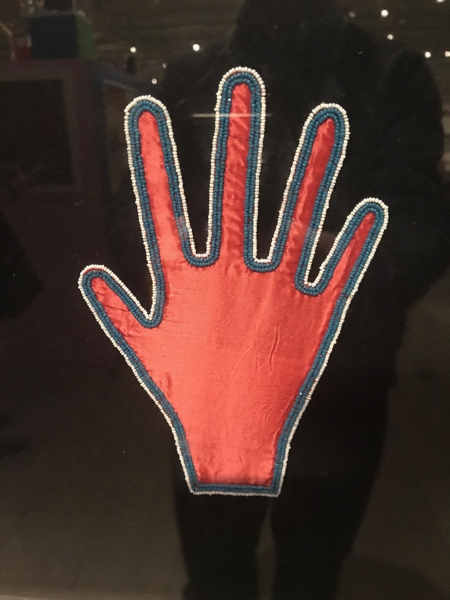
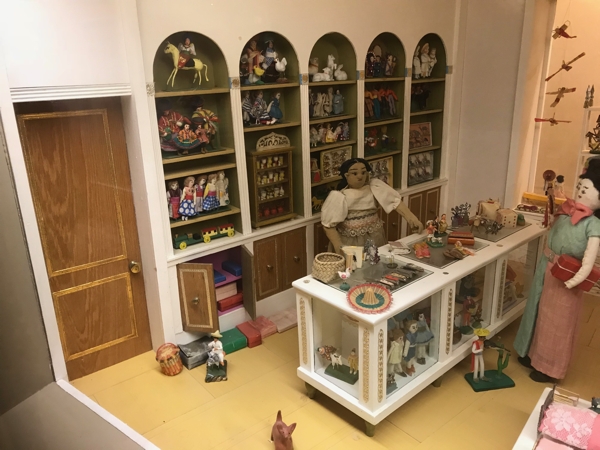
Once again, a reminder that all these things are hand-made.
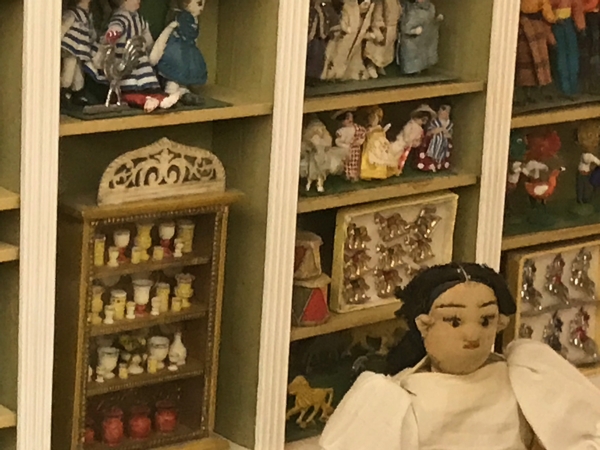

Unbelievably tiny things. You can see how — not even a quarter of the way through the room — your mind begins to boggle. ALL THESE THINGS, KENNETH, WHERE DID THEY COME FROM?
Again with the forced perspective, with larger figurines diminishing in size as we climb the mountain…
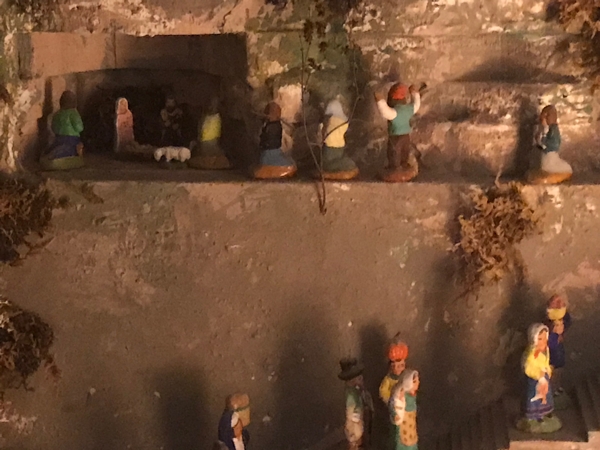
…to worship the baby Jesus.
NOTE #3: Use your traditions.
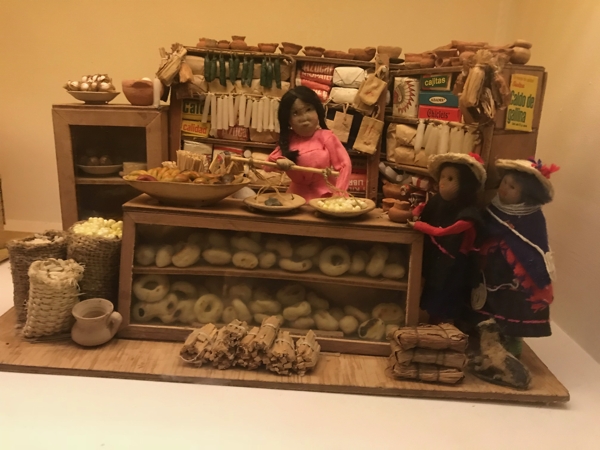
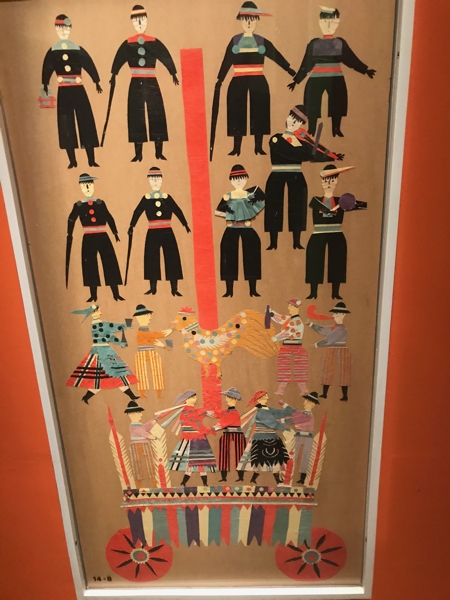
NOTE #4: Use the materials at hand.

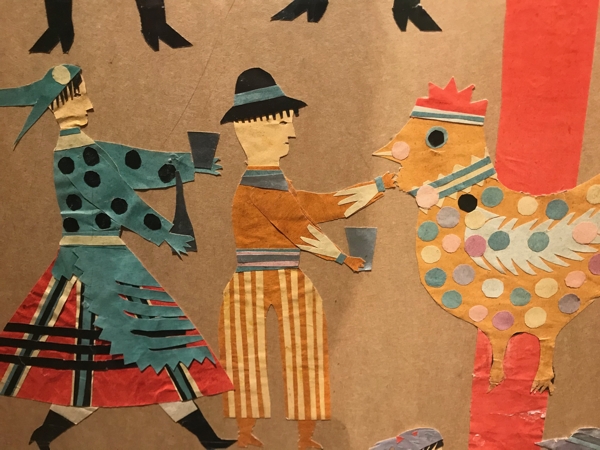
Feed the giant polka-dotted chicken. NOTE #5: Why the heck not?
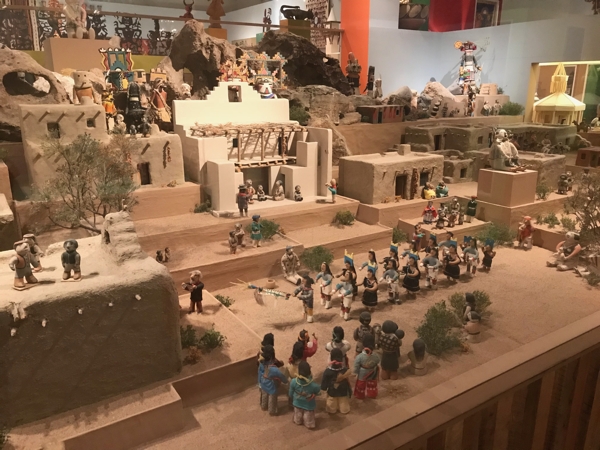
NOTE #6: Make a doll.

And there we are.

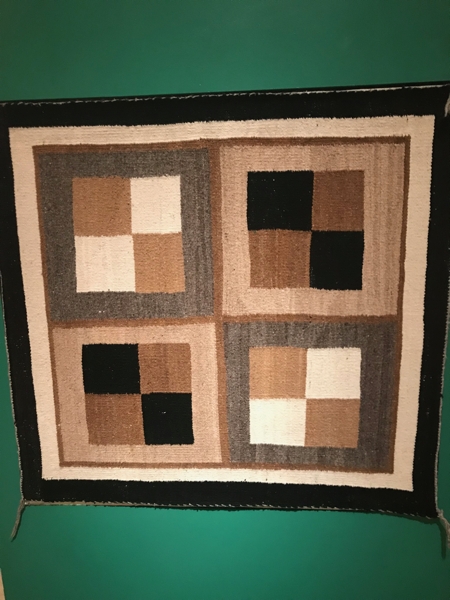
NOTE # 6: It doesn’t have to be complicated.
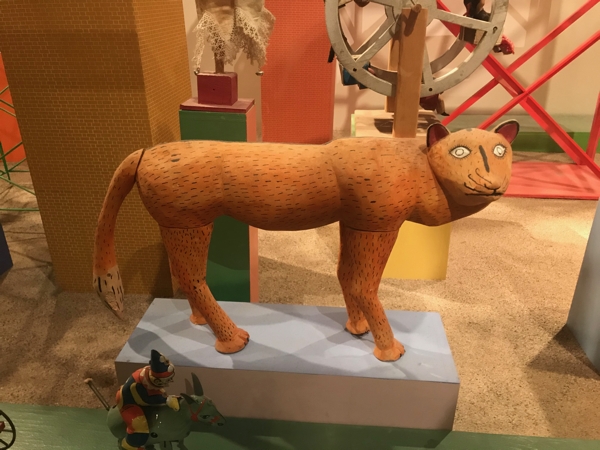
We actually own a rodent cousin of this feline — an old-school Oaxacan carving using dyes instead of paint.
Speaking of rodents:
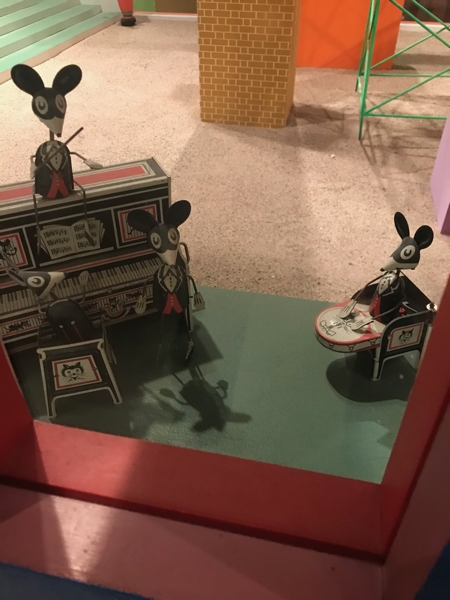

Okay, this gets interesting.
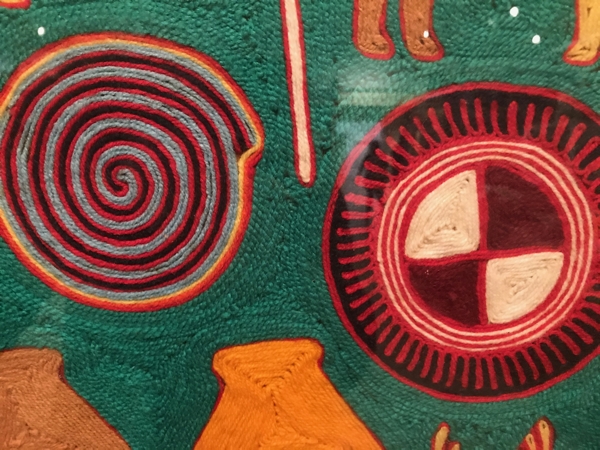
This is a “yarn painting.” Shades of day camp!
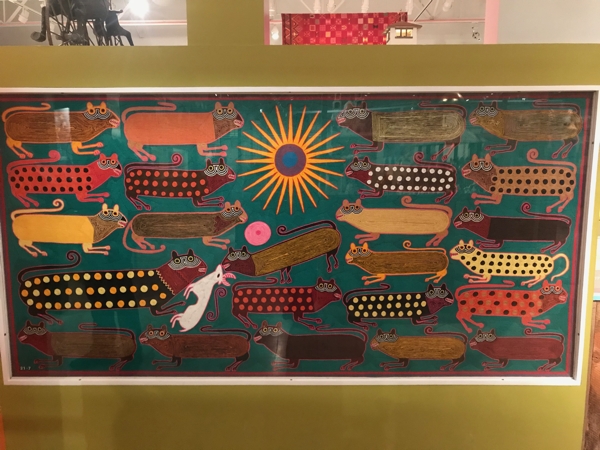
Kitties!

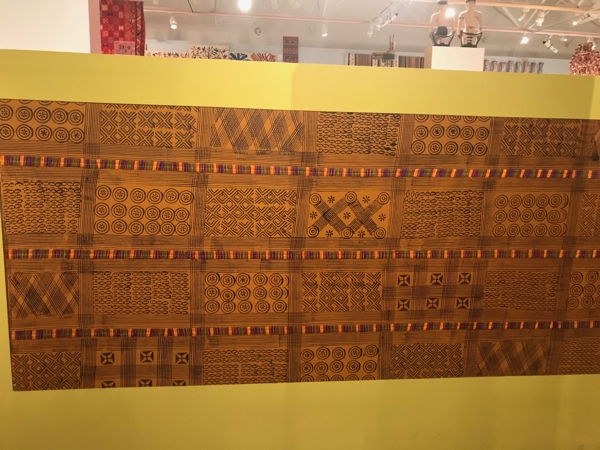
NOTE #7: Doodle. Repeat.
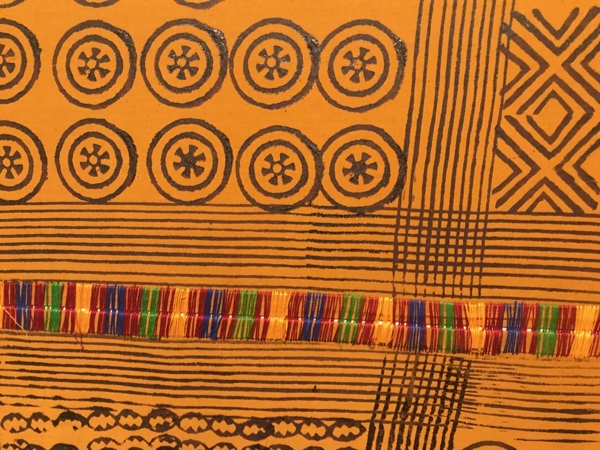
NOTE #8: Eschew precision.

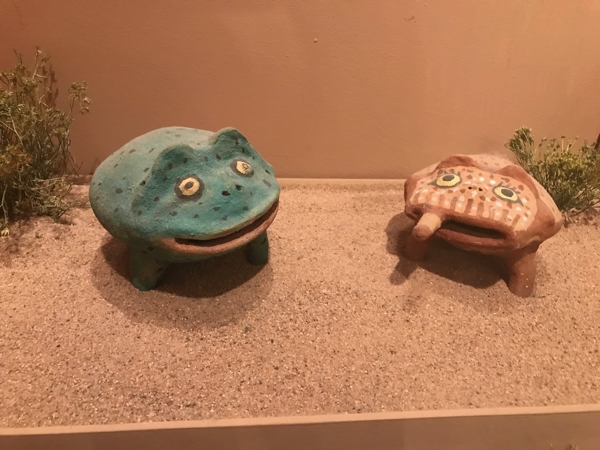
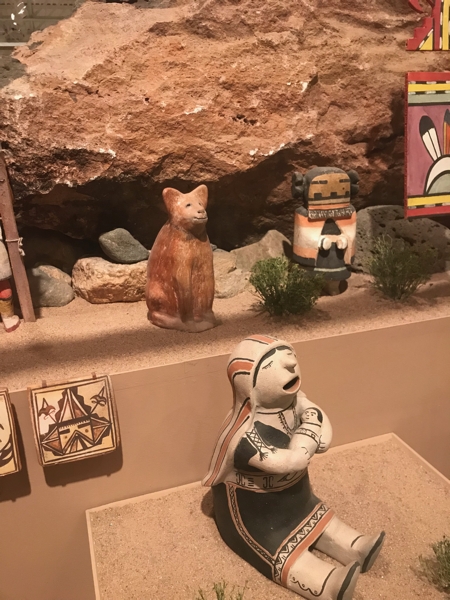


NOTE #9: Decorate it.
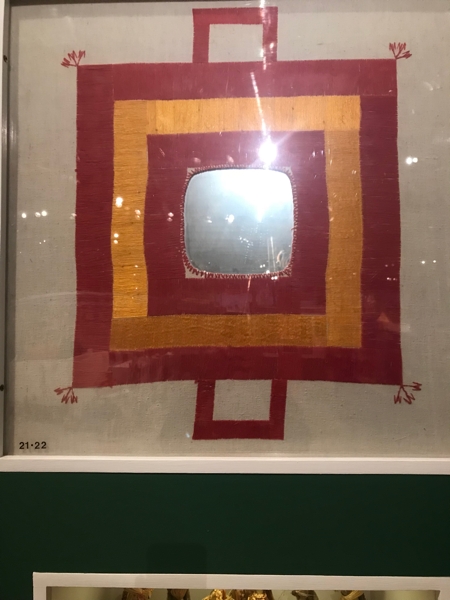

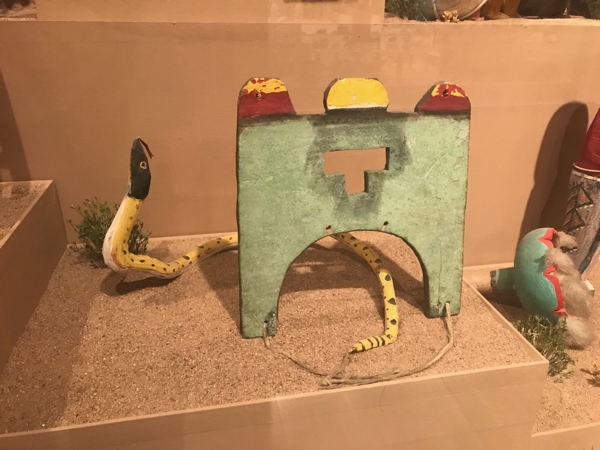

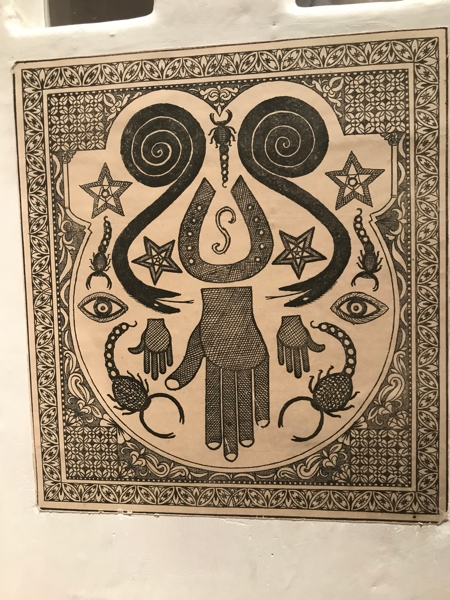
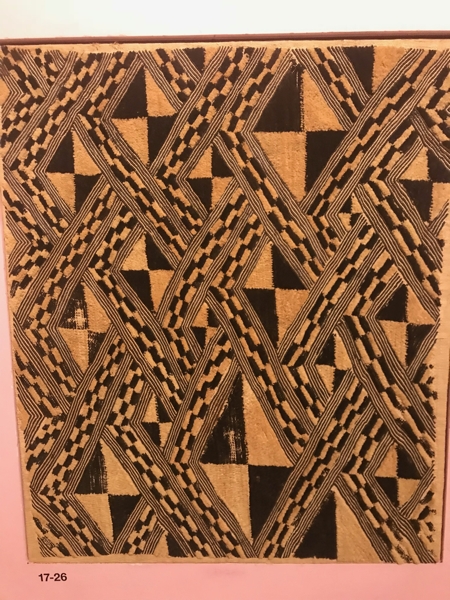
Let us not ignore the fact that many of these artisans are quite skilled. “Folk” does not imply “primitive.”

Okay, let’s recognize the skill of the artists who assembled this gigantic exhibit. Remember, this Wal-Mart full of stuff is only one-tenth of the entire Girard collection. Someone had to pick through the gazillion pieces, choose the ones to include, and then decide how to display them. This case, for example, gives us heaven and hell. Behold:
See?
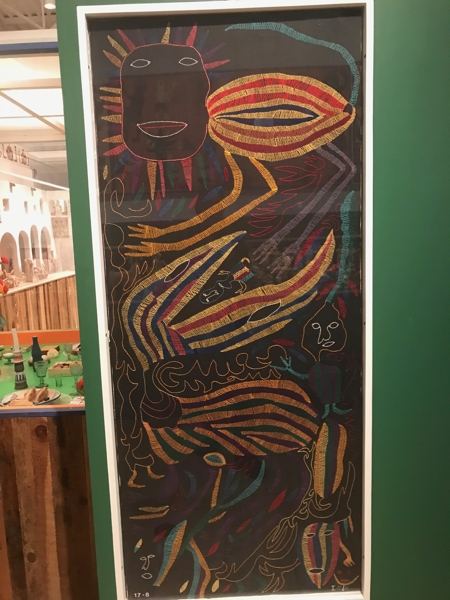
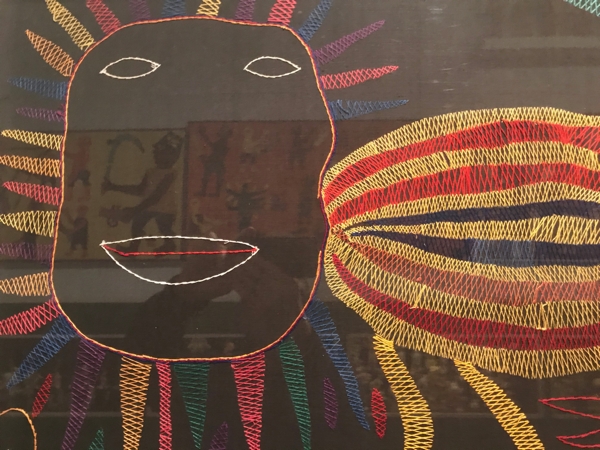
The whole room is screaming at you, “WHY THE HELL ARE YOU NOT MAKING ART??”




Okay, this one’s a little creepy.
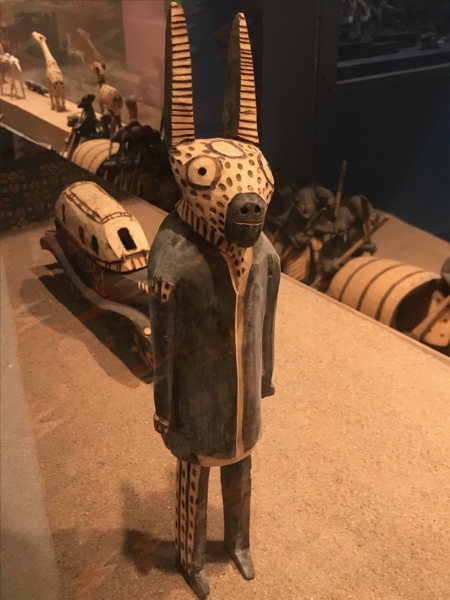
A slightly less creepy version. I think what happened with the first one is that the artist got into a zone and put that third eye in there without thinking.
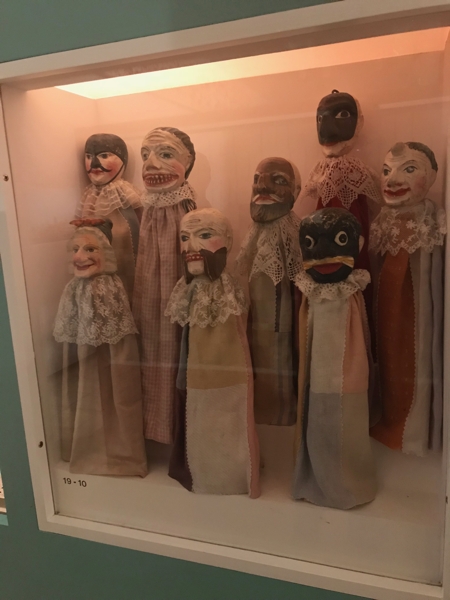
NOTE #10: Make it for children to play with.
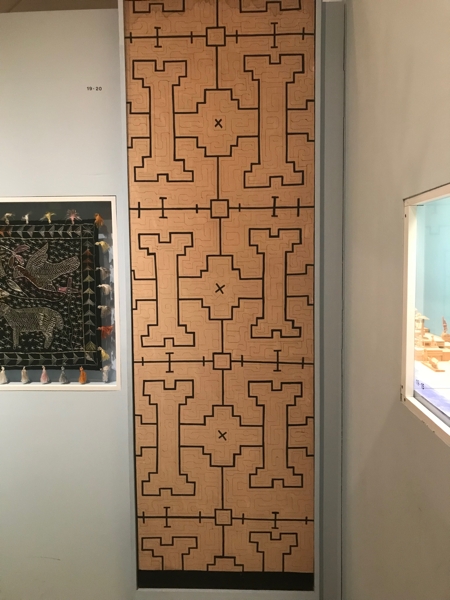
One of my favorites from our first visit.
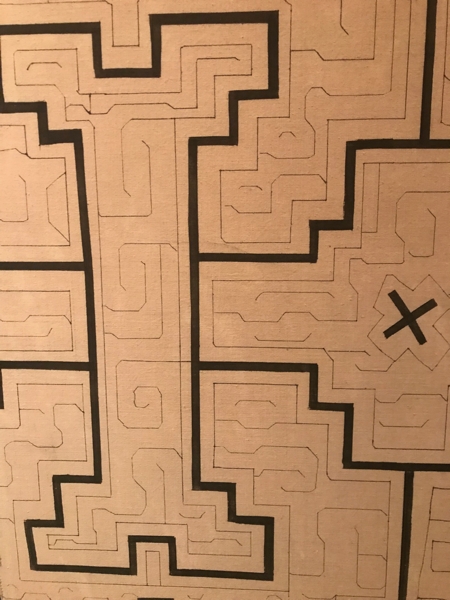
To be honest, this is where I started tripping. Which is appropriate, since this hand-painted fabric is from a culture that uses ayahuasca ritually, and these patterns are inspired by that.
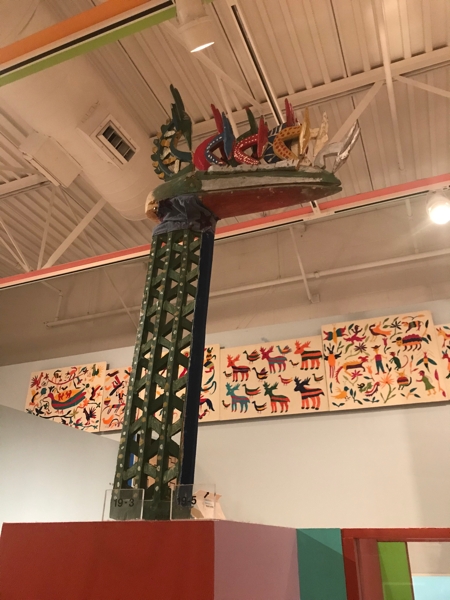
When visiting the Girard Wing of the Museum of International Folk Art, always remember to look up. It won’t help with the tripping, but look up.

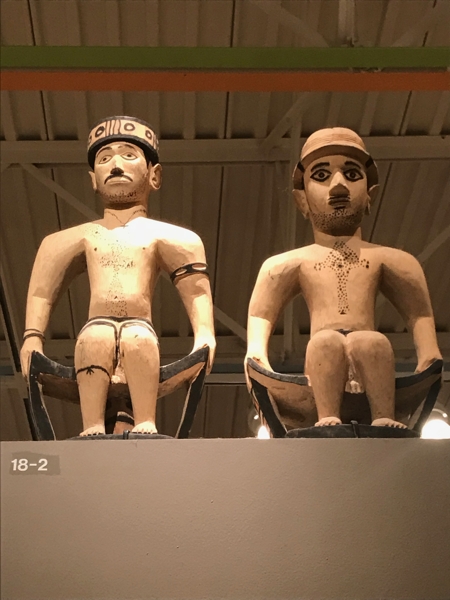

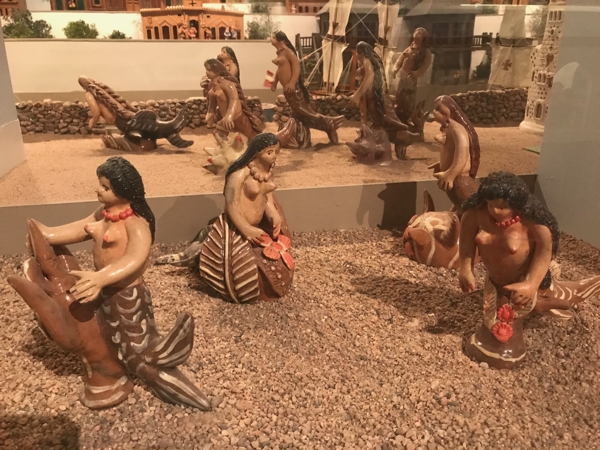



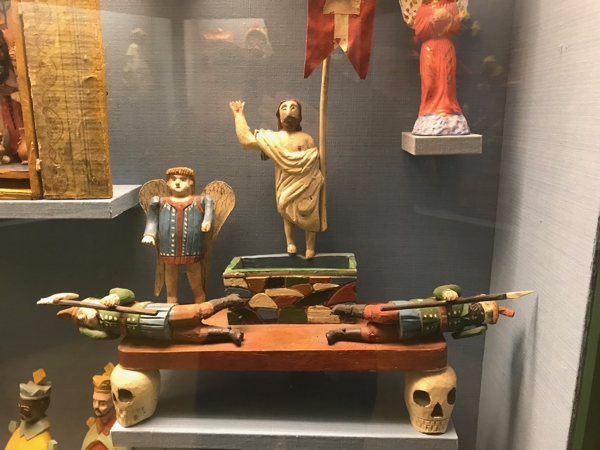
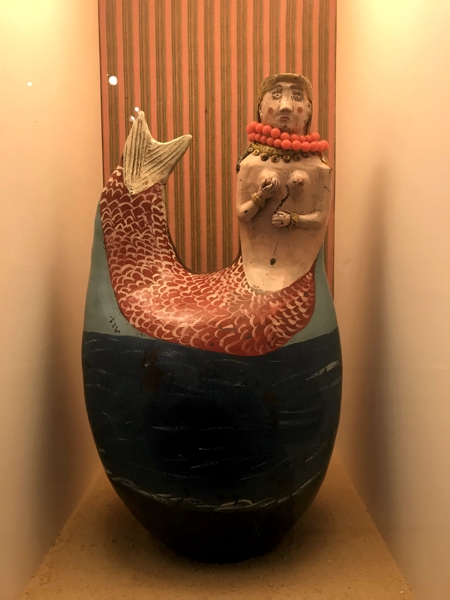
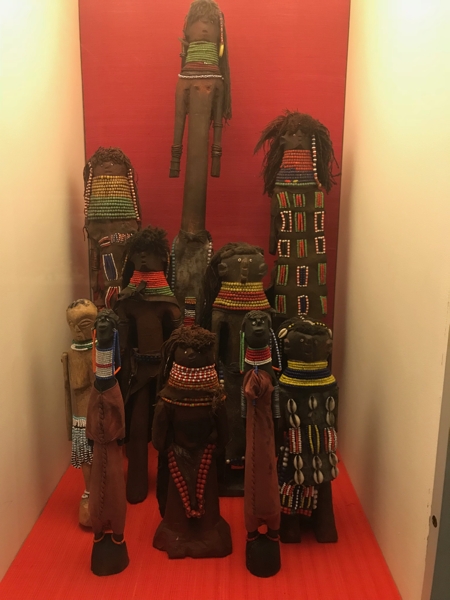

NOTE #11: When in doubt, make a cat.
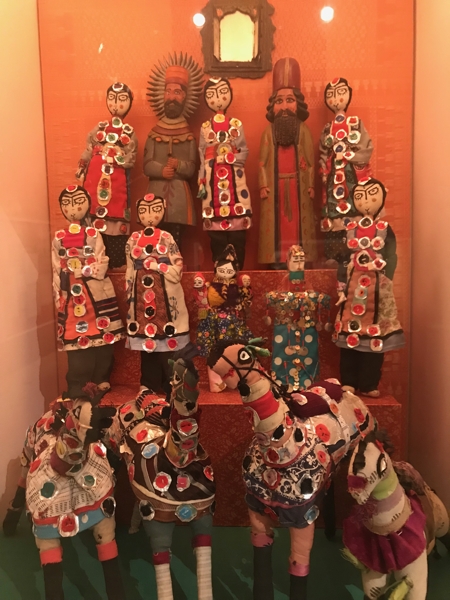
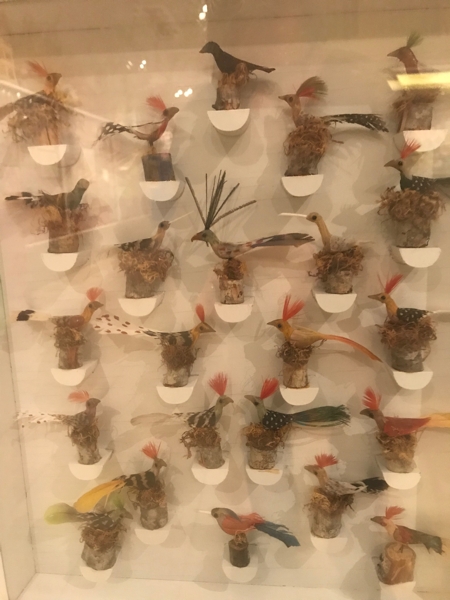
Each of these is about as big as your thumb.

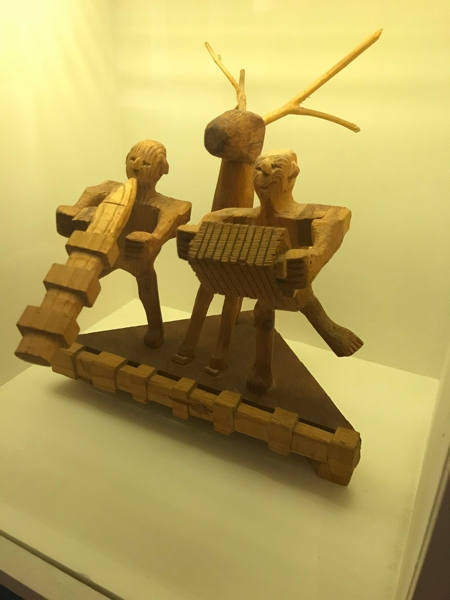
Let’s pause here to make a major point. You’ve been objecting in your head that all of this is fine and good but you yourself have no artistic talent, and this little carving would like to poke a jolly little finger in your eye and tell you to get over that. Look how clumsily this is made! But would you not be ecstatic if you had made something this joyful? (The answer is yes, yes you would.)

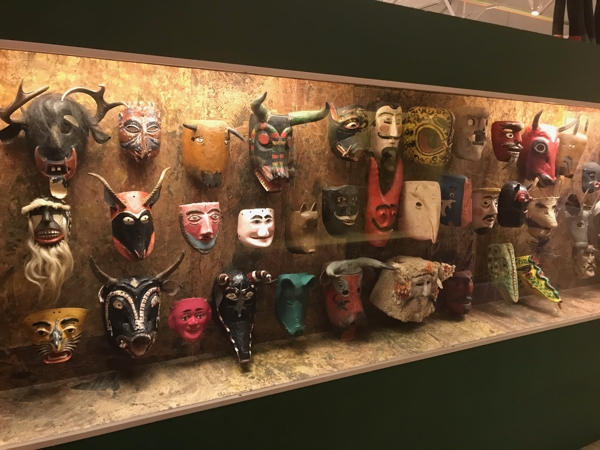
Ah, the masks!
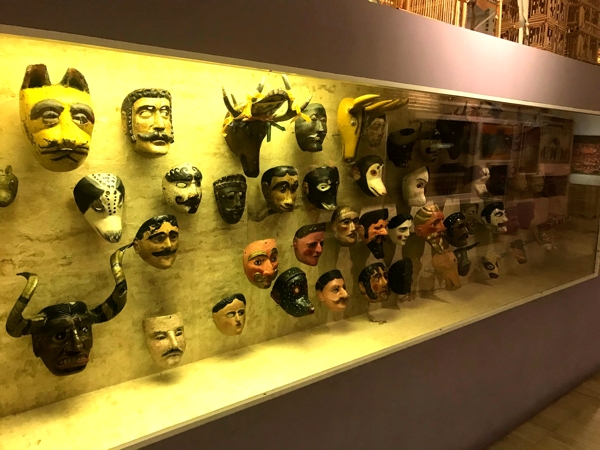
Look at these:


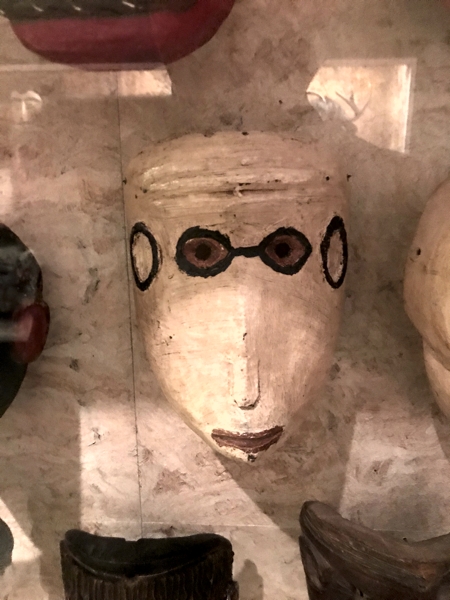
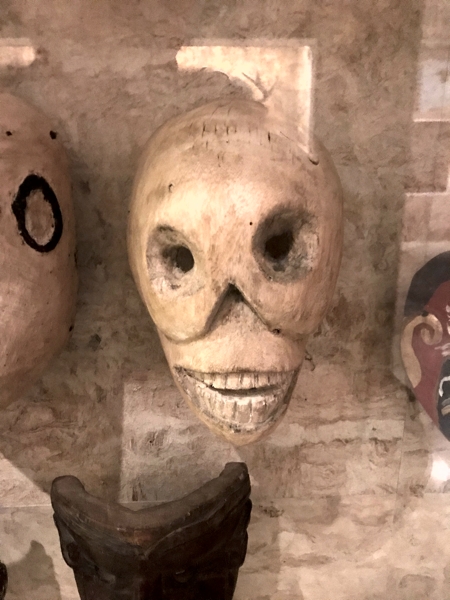

Some are more “polished” than others, but all of them are true.
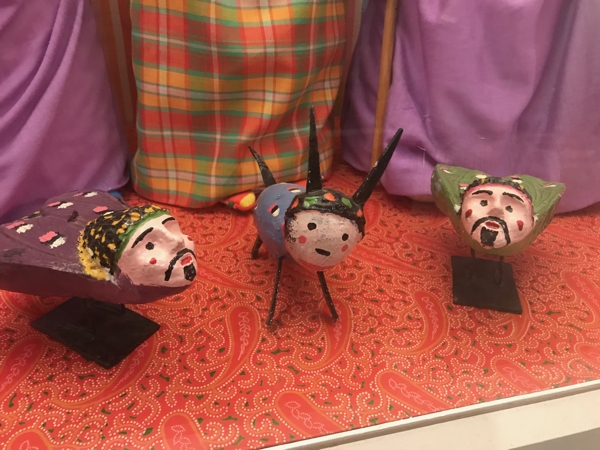
NOTE #12: Give it a face.


Exhausted yet? That’s just the Girard Wing. There are several other galleries, none of which are as huge as the Girard, thank goodness.
The basement area has a very nice exhibit on what constitutes folk art, with several objects set up with yes/no/maybe comments by museum staff members. And before you start objecting that you are an urban sophisticate and don’t really have a “folk” in you:
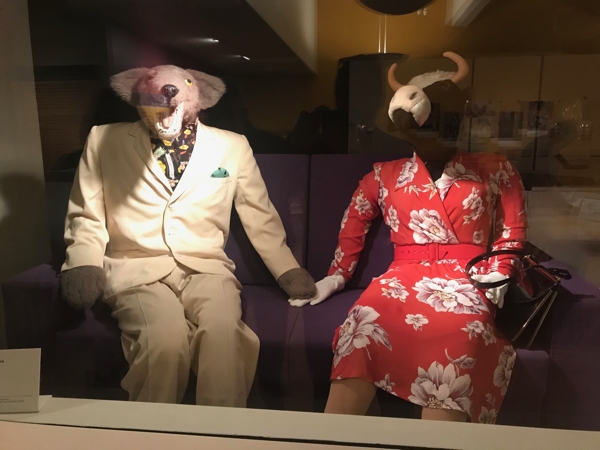
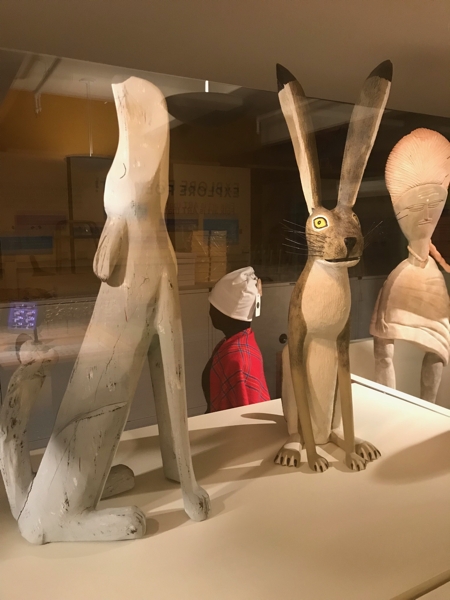
Coyote and Rabbit are not uninformed by modern cartooning.
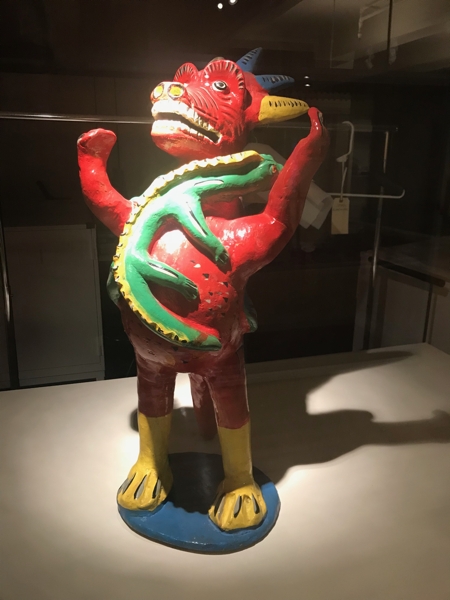
In one of the upstairs galleries, there was an exhibit on Peruvian culture.

This painting is from an ayahuasca curandero. It is based on the visions that come to him while under the influence of the psychotropic drink.
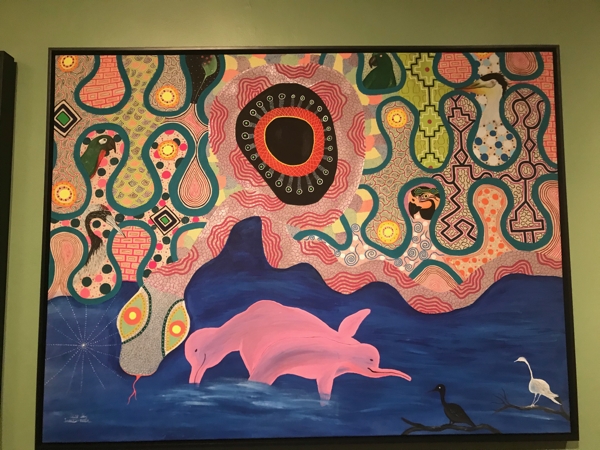
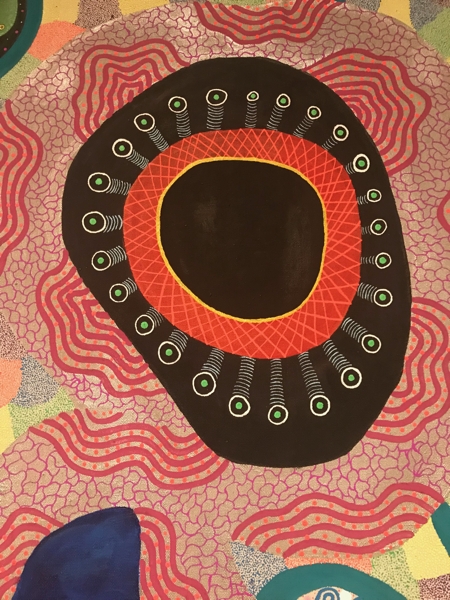
Everything is alive.
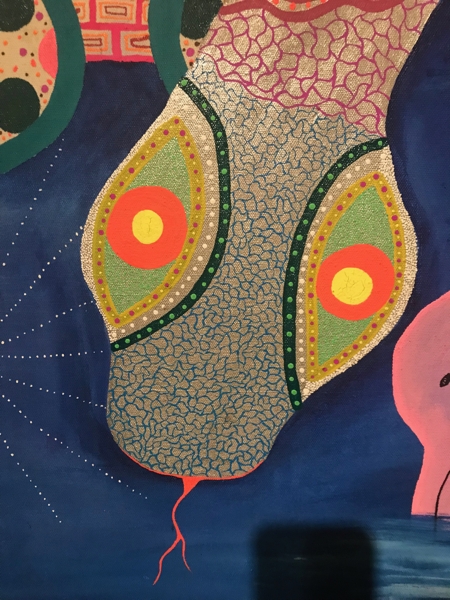

We’ve seen this before, right?

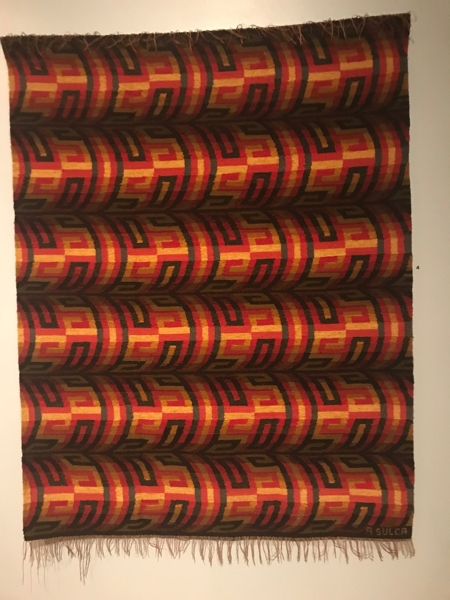
A modern Peruvian artist riffing off of traditional patterns. (Yes, that’s a completely flat weaving.)
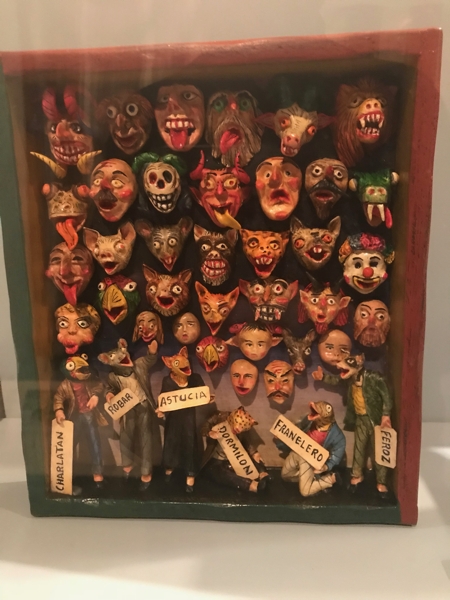
I would be remiss if I didn’t mention that about half the Peruvian exhibit deals with social protest. I didn’t take any photos of the clothing worn by the youth resistance, but I will note that the knitted ski masks they wear feature the Anonymous mustache. Culture is permeable.
There was an exhibit of modern artists working from the folk tradition.
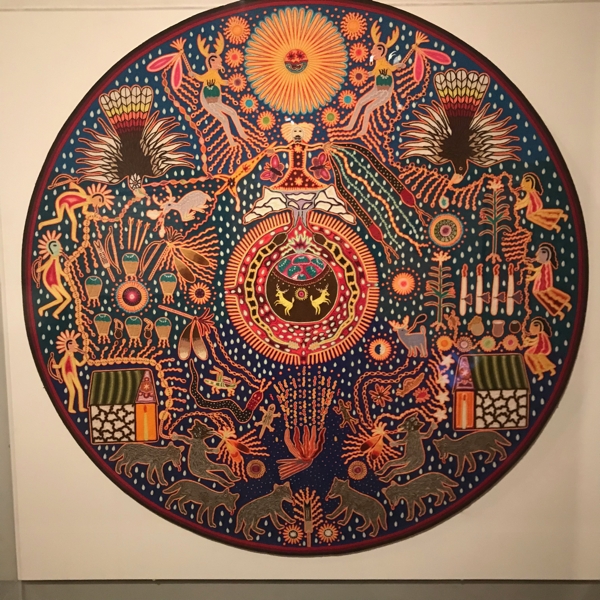
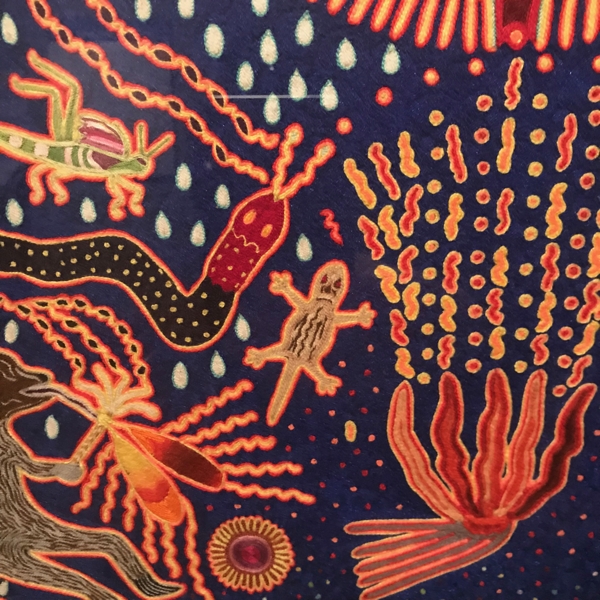
And then there was the exhibit of Tramp Art. I was unaware of the term, but it’s carving done by workers in the 19th–20th centuries in their spare time. Idle hands, and all that. It has nothing to do with hobos. Mostly it’s notch carving, and personally I find it very disturbing.

I like the embroidery here.
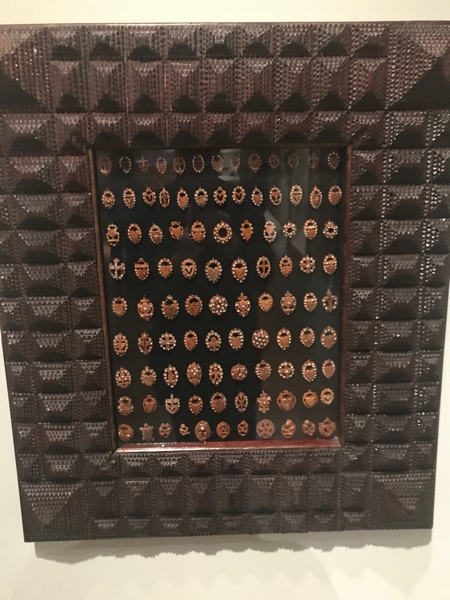
See those little things?
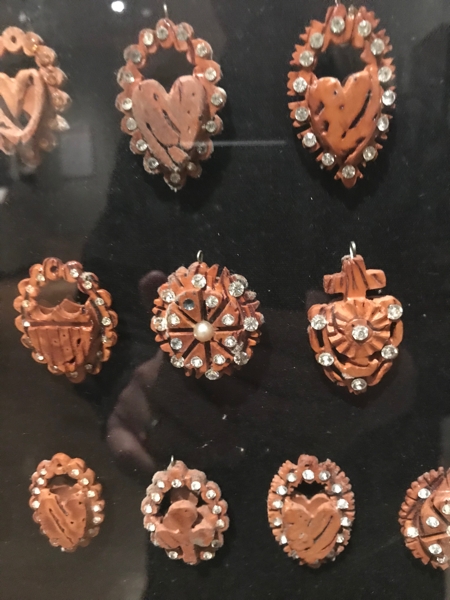
They are carved and bejeweled peach pits, all done by one man, mostly religious in nature.
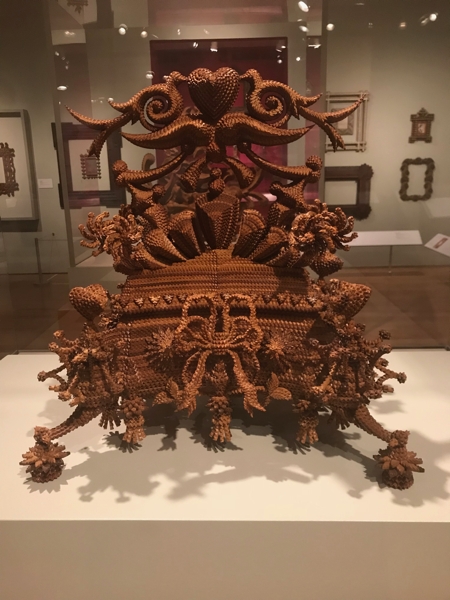
You might say this is exuberant. I say it’s weirding me out.

A point I made in my blog post from five years ago is that given the opportunity, humans prefer and will create the most ornate thing they can.
That was our morning. We lunched at the Museum Mile Cafe — yes, there are three other museums on that hill — and I liked the drum they had out front.

After lunch, we headed to Canyon Road, which is lined with galleries. In strolling the Plaza the day before, I was struck at the awfulness of the art in the galleries there. Completely lackluster and insipid — not anything with the energy of the least item in the Museum of International Folk Art — and I feared we were going to find the same kind of pallid imitation of art on Canyon Road.
But fortunately, the good far outweighed the bad, and if I had won the lottery I would have spent a great deal of money. I don’t have any photos because mostly they discourage that kind of thing.
True confession: I came to Santa Fe determined to purchase art. I was very very attracted to several pieces and had to talk myself out of buying one of these bells (the shipping would probably cost as much as the art), but I finally found a piece that I loved and was within my self-imposed budget:
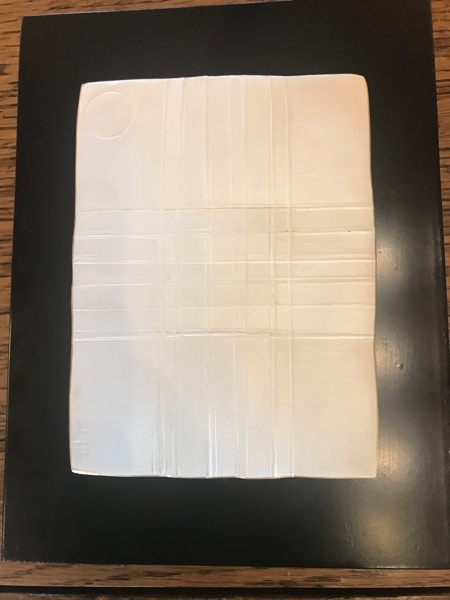
Let me explain. This is “Peace by Peace” by Kevin Box, and it is from the Selby-Fleetwood Gallery. Box does these lovely origami sculptures made of painted aluminum, and this small wall piece struck me and wouldn’t let me go. Do not be deceived: the white is aluminum, the black is bronze. The thing weighs a ton, and naturally I had it shipped. Do I know where it’s going to go in the house? No clue. I don’t care. It’s a beautiful piece; I accomplished my goal.
We headed back to the condo to rest a bit and then head to dinner at Santacafé, the “best restaurant in Santa Fe” as it proclaims in all its marketing. Alas, dear reader, it is not. In fact, it was the worst meal I have had at any restaurant with any pretensions to cuisine. What should have been an interesting tarragon pasta with shrimp in red sauce was astoundingly flavorless. As in, it literally had no taste that I could detect. Most unfortunate. (My fellow travelers had similar experiences with their entrees.) The desserts, on the other hand, were out of this world.
Here’s an interesting coincidence: the table had crayons, and having spent the day mulling over a new book exhorting you to do art because you can, I began to doodle. First I drew a labyrinth, then drew the Temple of the Rainbow Serpent to show my companions how the enlarged center spaces made the walk a completely different experience than the usual 7-circuit pattern. Our waiter, a bejewelled and pierced person, as he was bringing the checks, asked, if he might, what my connection to these patterns was. I explained that I had one in my back yard and had visited Temples of the Cosmos.
He proceeded to tell me of the labyrinths he had helped construct and maintained, and then mentioned a friend of his that he worked with, who now lives in England, who had done a lot of work with labyrinths: Sig Lonegren. Not sure I was hearing him right, I asked him to write down the name:

As he was walking away, it hit me. “Sig Lonegren!” I shouted after him — “He wrote the book!” He looked back, surprised and pleased. “Yes, he did,” he replied.
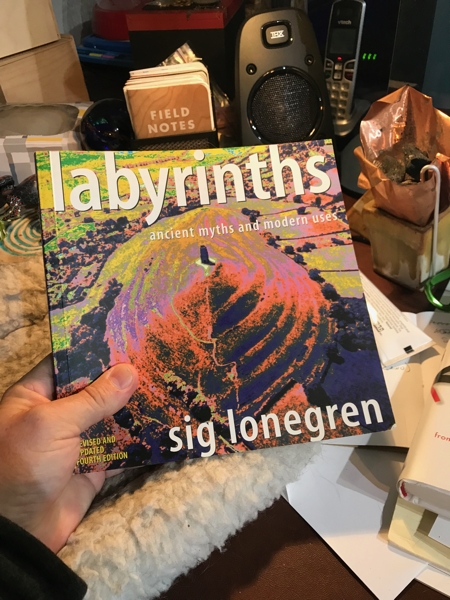
I wish I had remembered that it was from this book that I stole the theme for Prelude (no fugue) No. 6. (Lonegren numbered the paths of an 11-circuit labyrinth and posited a tone row based on the chromatic scale.)
[Backtrack for a bizarre coincidence story: as we were finishing up the tour of Carlsbad Caverns, we struck up a conversation with a couple whom we noticed had been dining at Yellow Brix the night before. They were originally from Florida but now live in Los Alamos. We said we were from the Atlanta area, and she said, “My sister lives in Newnan, if you know where that is.” Her sister teaches Spanish at LaGrange College. The Newnan Vortex strikes again.]
One more day!
